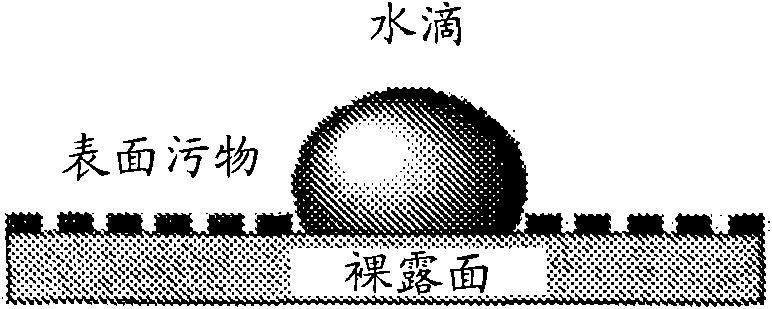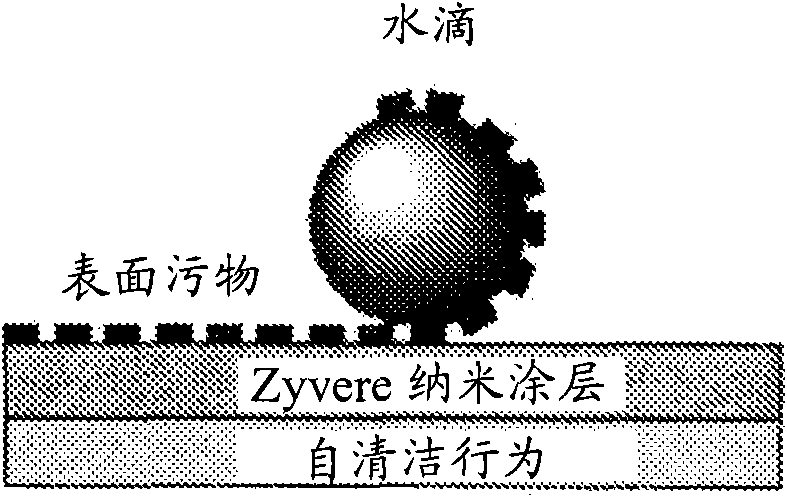Dendritic polyurethane coating
A dendritic, coating technology, applied in polyurea/polyurethane coatings, thixotropic coatings, antifouling/underwater coatings, etc., can solve problems such as weathering, affecting normal use, environmental conditions, etc.
- Summary
- Abstract
- Description
- Claims
- Application Information
AI Technical Summary
Problems solved by technology
Method used
Image
Examples
preparation example Construction
[0141] In the preparation of the coatings of the present invention, the hydroxyl functional dendritic polyesters are used as crosslinking building blocks and flexible body crosslinkers. The use of hydroxy-functionalized dendritic polyesters of the highly cross-linked polyurethanes of the present invention resulting from cross-linking with polyisocyanates tends to increase the glass transition temperature, Tg, of the resulting resin. In general, the higher the glass transition temperature, the harder the coating surface as measured by methods such as the Shore-hardness test.
[0142] To maximize crosslinking and optimize the performance of crosslinked coatings, stoichiometric ratios of acrylic polyols, hydroxyl functional dendritic polyesters, hydroxyl functional silicone polyacrylate resins and / or fluorosurfactants can be combined with poly isocyanates react. The reaction ratio can be calculated based on the equivalent weights of the hydroxy-functional dendritic polyester, ac...
Embodiment 1
[0155] Example 1 illustrates the preparation of a two-component dendritic polyurethane clearcoat. Part A refers to the resin component, while component B refers to the crosslinker component, or sometimes interchangeably referred to as the "activator" component in this description. Part A and Part B were mixed 1:1 by volume.
[0156] Step 1: Part (A)
[0157] Charge 4-6 g of BOLTORN into a 200 mL round bottom sealed flask (enclosed flask) Hydroxy-functional dendritic polyester (Perstorp Specialty Chemicals, Perstorp, Switzerland) and 12 g of anhydrous acetone. The material was stirred for 5 to 10 minutes.
[0158] Step 2: Part (A)
[0159] Charge 20 to 30 g of G CURE into a separate 100 mL round bottom flask (Cognis Polymers, Cincinnati, OH). This flask will be used as the base mixing vessel to generate part (A) resin.
[0160] Step 3: Part (A)
[0161]Using the 100 ml round bottom flask described in step 2, add 15 to 20 g of the dendritic polyester solution described...
Embodiment 3
[0224] Coatings were tested at Eastern Michigan University through Stonebridge Technical Services. The results, summarized in Table 1, demonstrate that the coatings described herein are comparable to recent automotive OEM aftermarket polyurethane clear coatings, including PPG’s formulated with nanoparticles. (US Published Patent Application Nos. 2003 / 0162876 and 2003 / 0162015)), providing far superior performance.
[0225] The coating compositions described herein are characterized by low viscosity to facilitate spray application and chemical adhesion to coatings including painted metal, aluminum, painted plastics, certain plastics, fiberglass, wood, epoxies, acrylics, and most Polyurethane based paints and powder coatings on various substrates. The coating composition is characterized by measuring the coating viscosity at room temperature (about 18° C.) for 15 to 18 seconds using a No. 2 (#2) Zahn Cup viscosity cup.
[0226] Table 1
[0227] sample
[0228] ...
PUM
| Property | Measurement | Unit |
|---|---|---|
| particle diameter | aaaaa | aaaaa |
| particle diameter | aaaaa | aaaaa |
| particle size | aaaaa | aaaaa |
Abstract
Description
Claims
Application Information
 Login to View More
Login to View More - R&D
- Intellectual Property
- Life Sciences
- Materials
- Tech Scout
- Unparalleled Data Quality
- Higher Quality Content
- 60% Fewer Hallucinations
Browse by: Latest US Patents, China's latest patents, Technical Efficacy Thesaurus, Application Domain, Technology Topic, Popular Technical Reports.
© 2025 PatSnap. All rights reserved.Legal|Privacy policy|Modern Slavery Act Transparency Statement|Sitemap|About US| Contact US: help@patsnap.com


